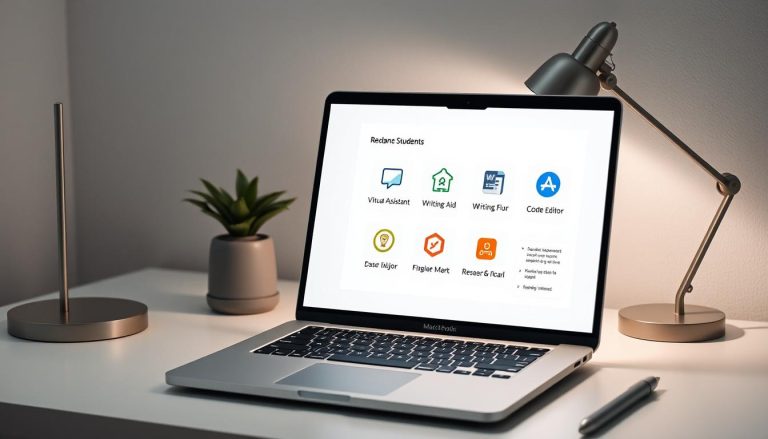
Developing lasting habits is crucial for achieving a balanced lifestyle. By understanding the process of habit formation, individuals can make meaningful changes that stand the test of time.
Thank you for reading this post, don't forget to subscribe!Creating habits that stick requires a strategic approach. It involves identifying the right triggers, creating an environment conducive to change, and persisting through challenges. This comprehensive guide will walk you through the essential steps to build habits that lead to lasting lifestyle changes.
Key Takeaways
- Understand the psychology behind habit formation.
- Learn how to identify and leverage triggers for habit change.
- Discover strategies to maintain consistency and overcome obstacles.
- Create an environment that supports your new habits.
- Develop a growth mindset to sustain long-term changes.
The Science Behind Lasting Habits
The process of building habits is rooted in neuroscience, involving a complex interplay of cues, cravings, and rewards. This neurological process is fundamental to understanding how habits are formed and how they can be modified or changed.
The Neurological Habit Loop: Cue, Craving, Response, Reward
The habit loop, as identified by researchers, consists of four key components: cue, craving, response, and reward. The cue triggers the habit, a signal that sets off the habit formation process. This cue leads to a craving, the motivational force behind the habit. The response is the behavior or action taken in response to the craving, and it’s followed by a reward, which is the payoff or benefit derived from the behavior.
Understanding this loop is crucial for self-improvement because it allows individuals to identify and manipulate the components to foster positive habits. By being aware of the cues that trigger certain habits, individuals can take steps to avoid or alter them.
Why Willpower Alone Isn’t Enough
Relying solely on willpower for habit formation is often ineffective in the long term. Willpower is a finite resource that can be depleted over time, making it unsustainable for maintaining habits. Moreover, willpower doesn’t address the underlying neurological processes driving habit formation.
A more effective approach involves designing an environment that supports desired habits and minimizes the need for willpower. This can be achieved by reducing the number of decisions needed to perform a habit, thereby increasing productivity and making it easier to stick to the habit.
How to Build Better Habits: The 4 Laws Framework
The 4 Laws Framework offers a structured approach to building better habits that stick. This framework is designed to help individuals create lasting changes in their behavior by focusing on four key principles: making habits obvious, attractive, easy, and satisfying.
Make It Obvious: Designing Effective Cues
To build better habits, it’s essential to start by making them obvious. This involves designing effective cues that trigger the desired behavior. One way to do this is by using habit tracking tools to monitor and record your habits. By being aware of your habits, you can identify areas for improvement and create strategies to overcome them.
- Identify the cues that trigger your habits
- Use habit tracking tools to monitor your habits
- Create a habit log to record your progress
Make It Attractive: Increasing Habit Appeal
Making habits attractive is crucial for building lasting changes. To increase the appeal of your habits, you can use various strategies such as adding rewards or creating a positive environment. For example, if you’re trying to build a habit of exercising regularly, you can make it more attractive by listening to your favorite music while working out.
By making your habits more appealing, you can increase your motivation to stick to them. This, in turn, can lead to improved productivity and overall well-being.
Make It Easy: Reducing Friction
Reducing friction is essential for making habits easy to adopt. This involves minimizing the number of decisions you need to make to perform a habit. For instance, if you want to build a habit of reading more, you can make it easier by keeping a book next to your bed or setting a reminder on your phone.
- Simplify the process of adopting a new habit
- Reduce the number of decisions needed to perform a habit
- Create an environment that supports your habits
Make It Satisfying: Creating Immediate Rewards
Creating immediate rewards is vital for making habits satisfying. This involves providing yourself with a reward or reinforcement immediately after performing a habit. For example, if you’ve built a habit of completing a task on time, you can reward yourself with a break or a treat.
By creating immediate rewards, you can reinforce positive behavior and increase your motivation to continue performing the habit. This can lead to lasting changes and improved overall productivity.
Starting Small: The Power of Atomic Habits
Atomic habits are about making tiny adjustments that cumulatively lead to significant improvements. This approach to habit formation focuses on the power of small wins, which can eventually lead to substantial self-improvement. By concentrating on minimal, achievable steps, individuals can create lasting habits that stick.
The 1% Better Principle
The 1% better principle is a straightforward yet effective strategy for self-improvement. It involves making small, incremental changes to daily habits, with the goal of improving by just 1% each day. This might seem insignificant on its own, but over time, these small improvements can compound, leading to remarkable results.
| Days | 1% Improvement | Total Improvement |
|---|---|---|
| 1 | 1% | 1% |
| 10 | 1% | 10.46% |
| 30 | 1% | 34.78% |
| 365 | 1% | 3778% |
Habit Stacking: Linking New Habits to Established Ones
Habit stacking is a technique that involves building new habits onto existing ones. By linking a new habit to a habit you already perform consistently, you can create a stack of habits that become automatic over time. For example, if you always brush your teeth as soon as you wake up, you can stack a new habit like flossing right after brushing.
The Two-Minute Rule for Overcoming Procrastination
The two-minute rule is a simple strategy for overcoming procrastination by making the initial step of a new habit extremely easy. If a task can be done in less than two minutes, it’s often a good starting point. This rule helps in building momentum and making the habit more appealing.

Environment Design: Engineering Success
To build better habits, it’s essential to engineer our environment for success. The environment plays a crucial role in shaping our behaviors and habits. By designing our surroundings to support positive habits, we can increase our chances of achieving our goals.
Creating Habit Triggers in Your Physical Space
Our physical environment can be a powerful trigger for habits. By creating visual cues and removing obstacles, we can make it easier to adopt new habits.
Visual Cues That Work
Visual cues are an effective way to trigger habits. For example, placing a guitar in a prominent location can encourage someone to practice more often. Visible reminders can serve as constant motivators, helping to build new habits.
![]()
Friction points are obstacles that make it difficult to perform a habit. By identifying and removing these friction points, we can make it easier to stick to our habits. For instance, laying out workout clothes the night before can make it easier to go for a morning run.
Digital Environment Optimization
In today’s digital age, our digital environment also plays a significant role in shaping our habits. By optimizing our digital surroundings, we can reduce distractions and increase productivity.
App Settings and Notifications
App settings and notifications can be both helpful and distracting. By customizing these settings, we can minimize distractions and maximize productivity. For example, turning off notifications for non-essential apps can help reduce digital noise.
Creating Digital Boundaries
Creating digital boundaries is essential for maintaining a healthy digital environment. This can include setting aside device-free times or creating tech-free zones in the home. By establishing these boundaries, we can reduce the likelihood of digital distractions and improve our overall well-being.
| Environment Design Strategy | Description | Example |
|---|---|---|
| Visual Cues | Using visible reminders to trigger habits | Placing a water bottle on your desk to remind you to drink more water |
| Removing Friction Points | Identifying and removing obstacles that hinder habits | Laying out workout clothes the night before to make morning exercise easier |
| Digital Boundaries | Setting limits on digital device usage | Designating device-free times during meals or before bed |
Tracking and Accountability Systems
The key to maintaining motivation and consistency in habit formation lies in effective tracking and accountability systems. By monitoring progress and staying committed, individuals can significantly enhance their ability to build better habits.
Effective Habit Tracking Methods
There are various methods to track habits, each with its unique advantages. The choice between paper and digital tracking depends on personal preference and lifestyle.
Paper vs. Digital Tracking
Paper tracking involves using a physical notebook or planner to record habits. This method is tactile and can be more engaging for some individuals. On the other hand, digital tracking utilizes apps or digital tools, offering convenience and accessibility across multiple devices.
The Don’t Break the Chain Method
This method involves creating a chain of consecutive days on which a habit is performed. The goal is to maintain the chain as long as possible, providing a visual motivation to continue the habit.
Social Accountability Strategies
Having a support system can greatly enhance habit formation. Social accountability strategies involve sharing goals and progress with others to increase commitment.
Accountability Partners
An accountability partner is someone who shares similar goals and checks in with each other regularly. This mutual support can provide an added motivation to stick to habits.
Commitment Contracts
A commitment contract is a formal agreement where an individual commits to a specific habit or goal, often with a penalty for failure. This can be an effective way to ensure accountability.
| Tracking Method | Advantages | Disadvantages |
|---|---|---|
| Paper Tracking | Tactile, engaging | Limited accessibility |
| Digital Tracking | Convenient, accessible | May lack personal touch |
| Don’t Break the Chain | Visual motivation | Can be stressful |
By combining effective tracking methods with social accountability strategies, individuals can create a robust system for building better habits. This integrated approach not only enhances motivation but also provides the necessary support to maintain long-term consistency.
Conclusion: Turning Habits into Lifelong Changes
Building better habits is a process that requires understanding, strategy, and persistence. By applying the principles outlined in the previous sections, individuals can turn short-term changes into lasting habits that drive long-term success.
The science behind lasting habits reveals that it’s not just about willpower, but about creating an environment that supports habit formation. By designing effective cues, increasing habit appeal, reducing friction, and creating immediate rewards, individuals can foster a productivity-driven routine.
As individuals embark on their journey to self-improvement, tracking progress and maintaining accountability are crucial. By leveraging effective habit tracking methods and social accountability strategies, individuals can stay on track and make lasting habits a reality.
Ultimately, turning habits into lifelong changes requires a commitment to persistence and continuous improvement. By embracing the strategies outlined in this article, individuals can unlock their full potential and achieve lasting success in their personal and professional lives.





